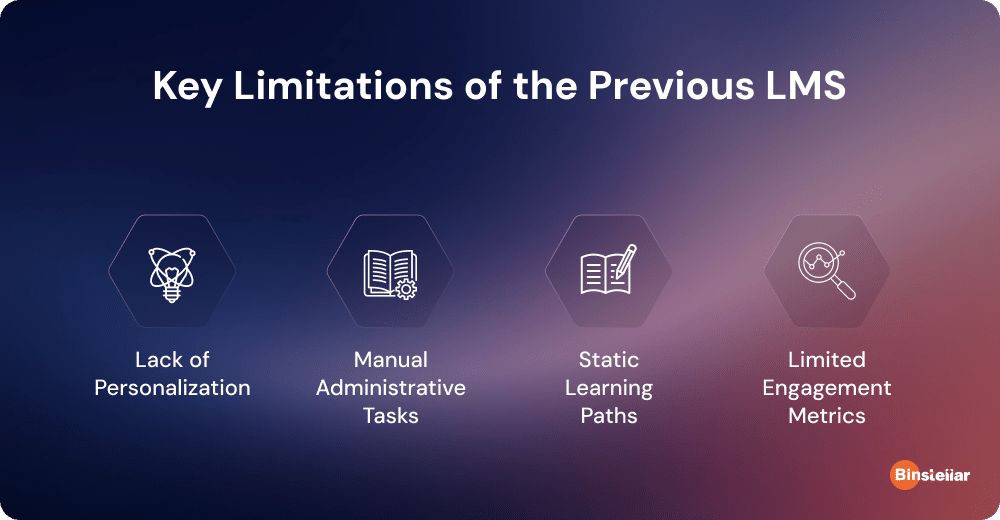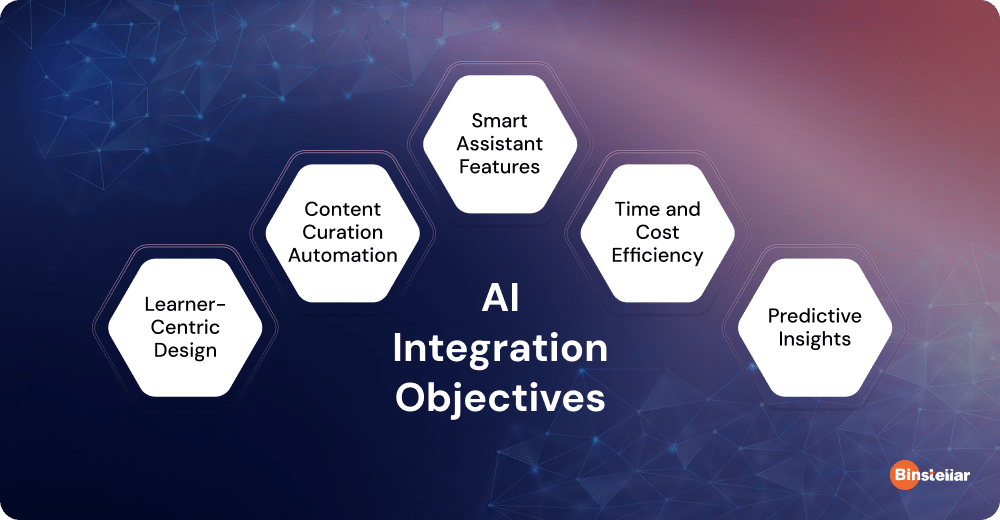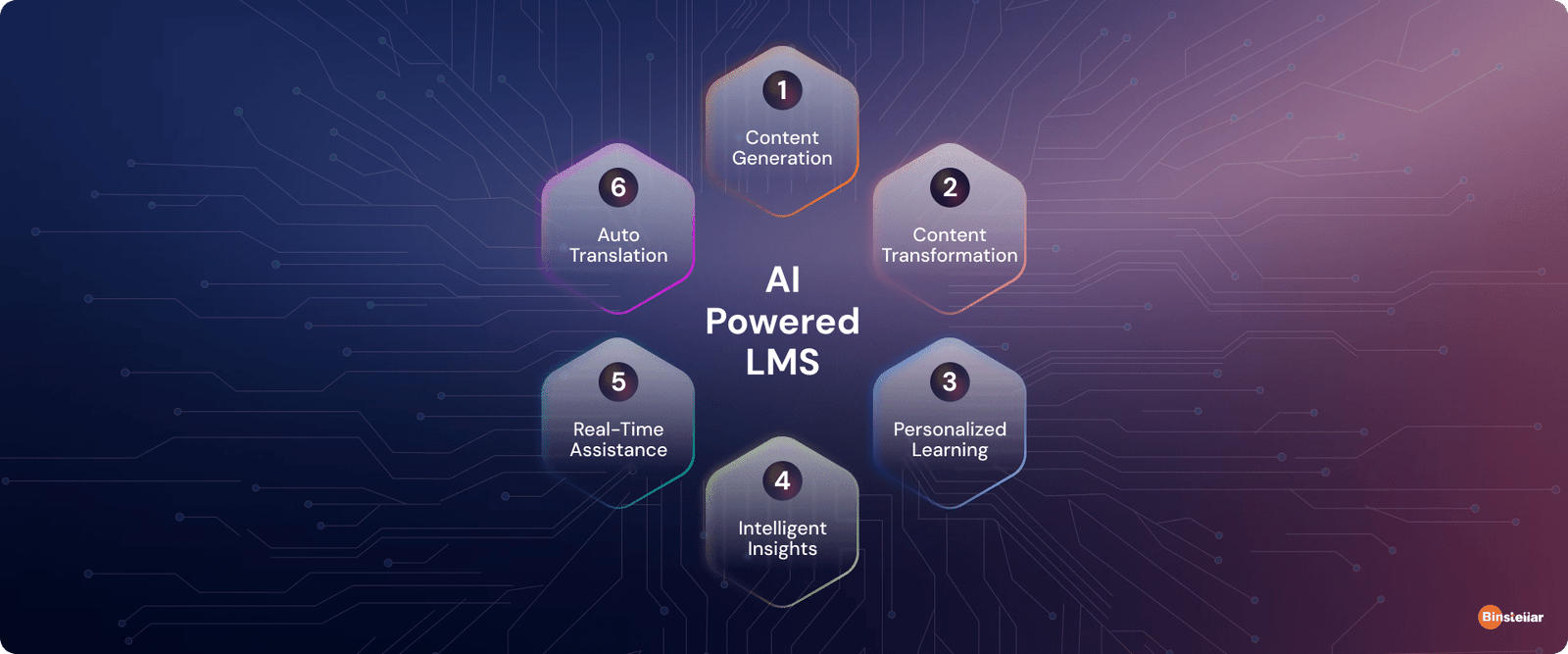Home >> Case Study >> Al In LMS
AI IN LMS
Client
A mid-sized corporate training service provider to over 50 enterprises globally.
Industry
EdTech / Corporate Training
Platform Type
LMS for online employee training and certification programs
Background & Need for Change
Client had been using a traditional LMS for over five years to manage training modules, learner progress, and certification tracking. While the system worked adequately for delivering standardized courses, it fell short in adapting to the evolving expectations of learners and administrators.
Key Limitations of the Previous LMS:
- Lack of Personalization: Learners received the same content regardless of prior knowledge or role.
- Manual Administrative Tasks: Scheduling, progress tracking, and report generation required significant manual input.
- Static Learning Paths: No dynamic adjustments based on learner performance or feedback.
- Limited Engagement Metrics: Insights were basic and did not offer actionable recommendations.

Primary Goals of Integrating AI
To address these challenges, client aimed to modernize its LMS with AI capabilities that could
support:
- Hyper-Personalized Learning Paths – Personalized course recommendations and pace to individual learner behavior, performance, and preferences.
- Automated Administrative Workflows – Reduce manual efforts in grading, content suggestions, progress tracking, and reporting.
- Enhanced Analytics & Insights – Leverage predictive analytics to identify struggling learners and recommend interventions.
- Content Optimization – Use AI to analyze learner feedback and performance to improve course material dynamically.
AI Integration Objectives
- Learner-Centric Design: Implement AI algorithms to analyze user behavior, recommend relevant modules, and adjust difficulty levels.
- Smart Assistant Features: Introduce chatbots for 24/7 learner support, FAQs, and onboarding assistance.
- Predictive Insights: Provide trainers and admins with forecasts on learner success rates, engagement drops, and completion likelihood.
- Content Curation Automation: Use Natural Language Processing (NLP) to tag, classify, and update learning content based on relevance and feedback.
- Time and Cost Efficiency: Reduce human intervention in administrative tasks to allow L&D teams to focus on strategy and mentoring.

AI Integration Objectives

Technologies Used
Machine Learning Algorithms
to track learner progress and recommend next steps.
Natural Language Processing (NLP)
to analyze course content and learner feedback.
AI Chatbots
built with simple conversational AI platforms for learner support.
Predictive Analytics Engines
to flag users at risk of dropping out or underperforming.
Features Introduced
- Personalized Course Recommendations – Learners received suggestions based on their job role, skill level, and past performance.
- Automated Grading & Progress Reports – The system could evaluate quizzes, generate scores, and send progress updates without manual work.
- AI Chatbot Support – A virtual assistant helped learners with common questions and guided them through the platform.
- Smart Notifications – The LMS sent reminders, feedback, and encouragement messages based on user activity.
- Learning Path Adjustments– Based on learner performance, the system could suggest easier or more advanced modules.
Integration Process
The AI tools were added step-by-step into the existing LMS. First, we created a roadmap to avoid any disruptions for users. Then our team connected the AI chatbot and then gradually added personalization and predictive analytics features.
The transition took about 3 months and involved close testing with a small group of users before launching it to everyone.

Outcomes and Impact
Quantitative Results
Within six months of implementing AI, Client saw clear improvements:
Course Completion Rate
Increased by 37%
Dropout Rate
Decreased by 23%
Admin Time on Manual Tasks
Reduced by 45%
Learner Engagement (time spent on platform)
Increased by 28%
Operational Improvements
The upgrade brought major improvements:
- Faster Reporting:No more manual report generation – dashboards gave real-time data.
- Better Content Planning:Insights from AI showed which modules were working well and which needed updates.
- Fewer Support Tickets:The chatbot solved up to 60% of learner queries without human help
Qualitative Feedback
Learners and trainers noticed a difference: